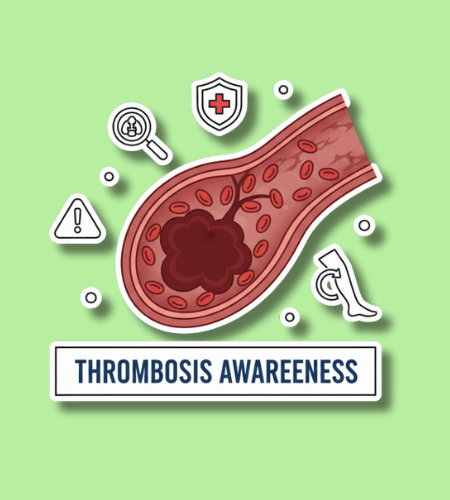World Thrombosis Day is observed every year on October 13 to raise awareness about thrombosis, the formation of dangerous blood clots in veins or arteries. This date was chosen in honor of the birthday of Rudolf Virchow, a physician whose work in the 19th century helped shape our modern understanding of clotting and vascular disease.
Table of Contents
History of World Thrombosis Day
World Thrombosis Day was officially launched in 2014 under the leadership of the International Society on Thrombosis and Haemostasis (ISTH). The goal was—and remains—to shine a light on thrombosis, a condition that is a major contributor to cardiovascular disease but is often underappreciated by the general public.
The date, October 13, was selected because it is the birthday of Rudolf Virchow, who is widely regarded as one of the founding figures in pathology and vascular medicine. Virchow’s investigations into how blood clots form and how they impact tissues laid key groundwork for modern medical research on thrombosis and vascular disease.
Why is World Thrombosis Day important?
Thrombosis may sound technical, but its consequences are deeply human. Blood clots underlie many of the deadliest events in medicine—heart attacks, strokes, pulmonary embolism—and yet many people are unaware of their risk, the warning signs, or how to prevent them. By shining a global spotlight, World Thrombosis Day helps bridge the gap between scientific knowledge and public awareness, giving people the tools to recognize danger and seek help early.
Another reason this day matters is that prevention is possible—and often simple. Lifestyle adjustments, medical screening, and informed conversation with healthcare providers can make a difference. The campaign encourages systems of care (hospitals, clinics, public health) to prioritize clot prevention, diagnosis, and accurate treatment.
Here are some of the key messages people often emphasize about thrombosis
- Early recognition of symptoms can be lifesaving
- Some people carry hidden or silent risk factors
- Prevention is not always complicated
- Education helps reduce fear and stigma
- Stronger healthcare systems can improve outcomes
How to Observe or Celebrate World Thrombosis Day
Because this is a health-awareness day rather than a festive holiday, “celebrating” it means participating in awareness, education, and actions that protect health. One way is to share information in your community—schools, workplaces, social media—about blood clot risk and prevention. You might also host or support a local talk, webinar, or screening event. Many organizations release infographics, short videos, or “challenge” campaigns (for example, encouraging more movement to reduce clot risk) around this day.
On a personal level, consider checking in with your own risk factors: talk to your healthcare provider about whether you might benefit from preventive strategies (especially if there’s surgery, long travel, immobility, or other risks). And use October 13 as a reminder to adopt or reinforce habits like staying active, avoiding prolonged immobility, and maintaining healthy weight and circulation.
If you want to join in or promote the cause, here are some simple actions you could take
- Share a trustworthy fact or infographic on social media
- Encourage friends or family to move during long periods of sitting
- Ask your doctor or nurse about your personal clot risk
- Volunteer or support any local health events or screenings
- Light a candle or post a message in solidarity for people affected by thrombosis
World Thrombosis Day Dates Table
| Year | Date | Day |
|---|---|---|
| 2025 | October 13 | Monday |
| 2026 | October 13 | Tuesday |
| 2027 | October 13 | Wednesday |
| 2028 | October 13 | Friday |
| 2029 | October 13 | Saturday |
Subscribe to our newsletter and never miss a holiday again!

